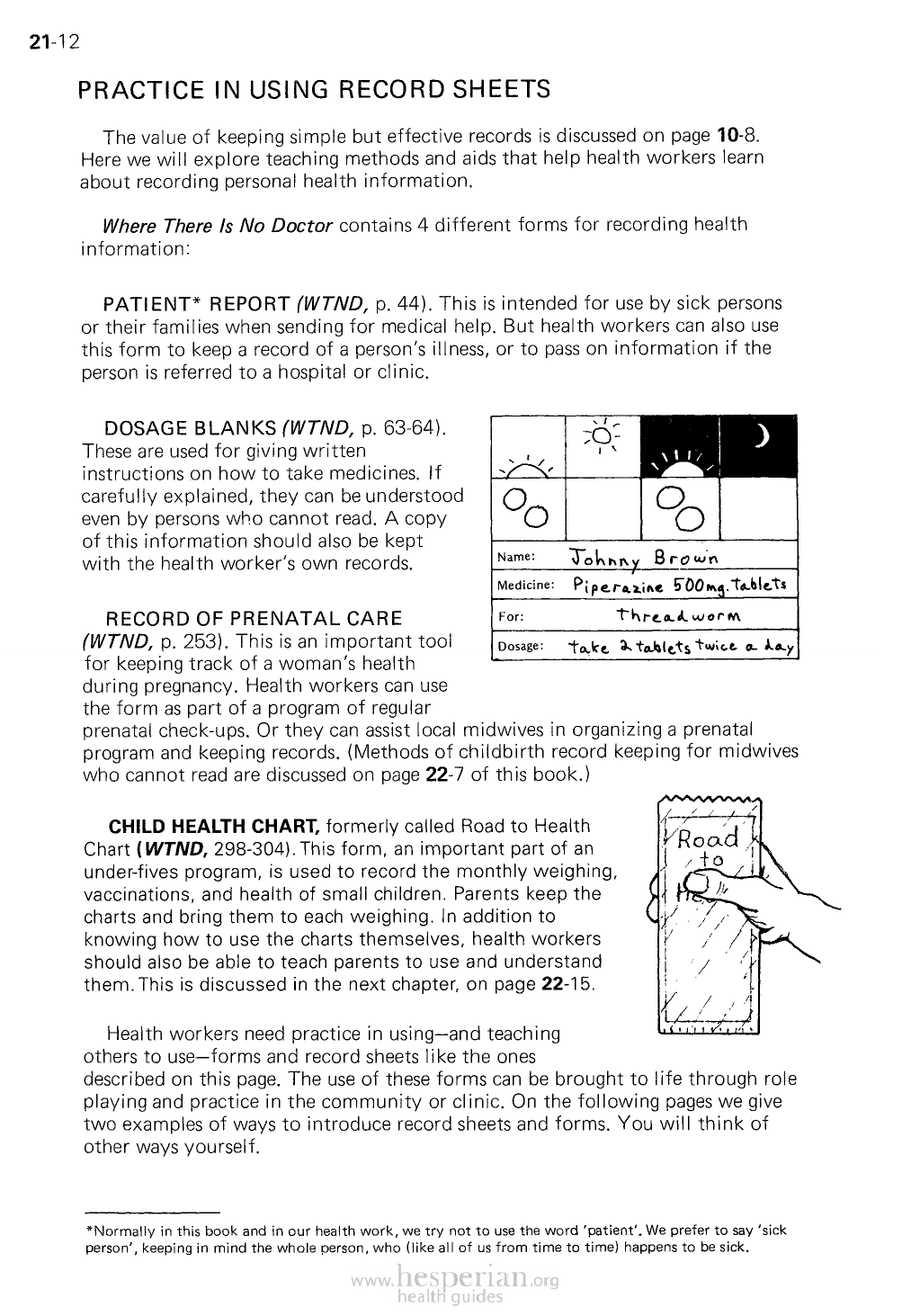
21-12
PRACTICE IN USING RECORD SHEETS
The value of keeping simple but effective records is discussed on page 10-8.
Here we will explore teaching methods and aids that help health workers learn
about recording personal health information.
Where There Is No Doctor contains 4 different forms for recording health
information:
PATIENT* REPORT (WTND, p. 44). This is intended for use by sick persons or
their families when sending for medical help. But health workers can also use this
form to keep a record of a person’s illness, or to pass on information if the person is
referred to a hospital or clinic.
DOSAGE BLANKS (WTND, p. 63-
64). These are used for giving written
instructions on how to take medicines. If
carefully explained, they can be understood
even by persons who cannot read. A copy
of this information should also be kept with
the health worker’s own records.
RECORD OF PRENATAL CARE
(WTND, p. 253). This is an important tool
for keeping track of a woman’s health
during pregnancy. Health workers can use
the form as part of a program of regular
prenatal check-ups. Or they can assist local midwives in organizing a prenatal
program and keeping records. {Methods of childbirth record keeping for midwives
who cannot read are discussed on page 22-7 of this book.)
CHILD HEALTH CHART, formerly called Road to Health
Chart (WTND, 298-304).This form, an important part of an
under-fives program, is used to record the monthly weighing,
vaccinations, and health of small children. Parents keep
the charts and bring them to each weighing. In addition to
knowing how to use the charts themselves, health workers
should also be able to teach parents to use and understand
them. This is discussed in the next chapter, on page 22-15.
Health workers need practice in using—and teaching
others to use-forms and record sheets like the ones
described on this page. The use of these forms can be brought to life through role
playing and practice in the community or clinic. On the following pages we give
two examples of ways to introduce record sheets and forms. You will think of other
ways yourself.
*Normally in this book and in our health work, we try not to use the word ‘patient’. We prefer to say ‘sick person’,
keeping in mind the whole person, who (like all of us from time to time) happens to be sick.